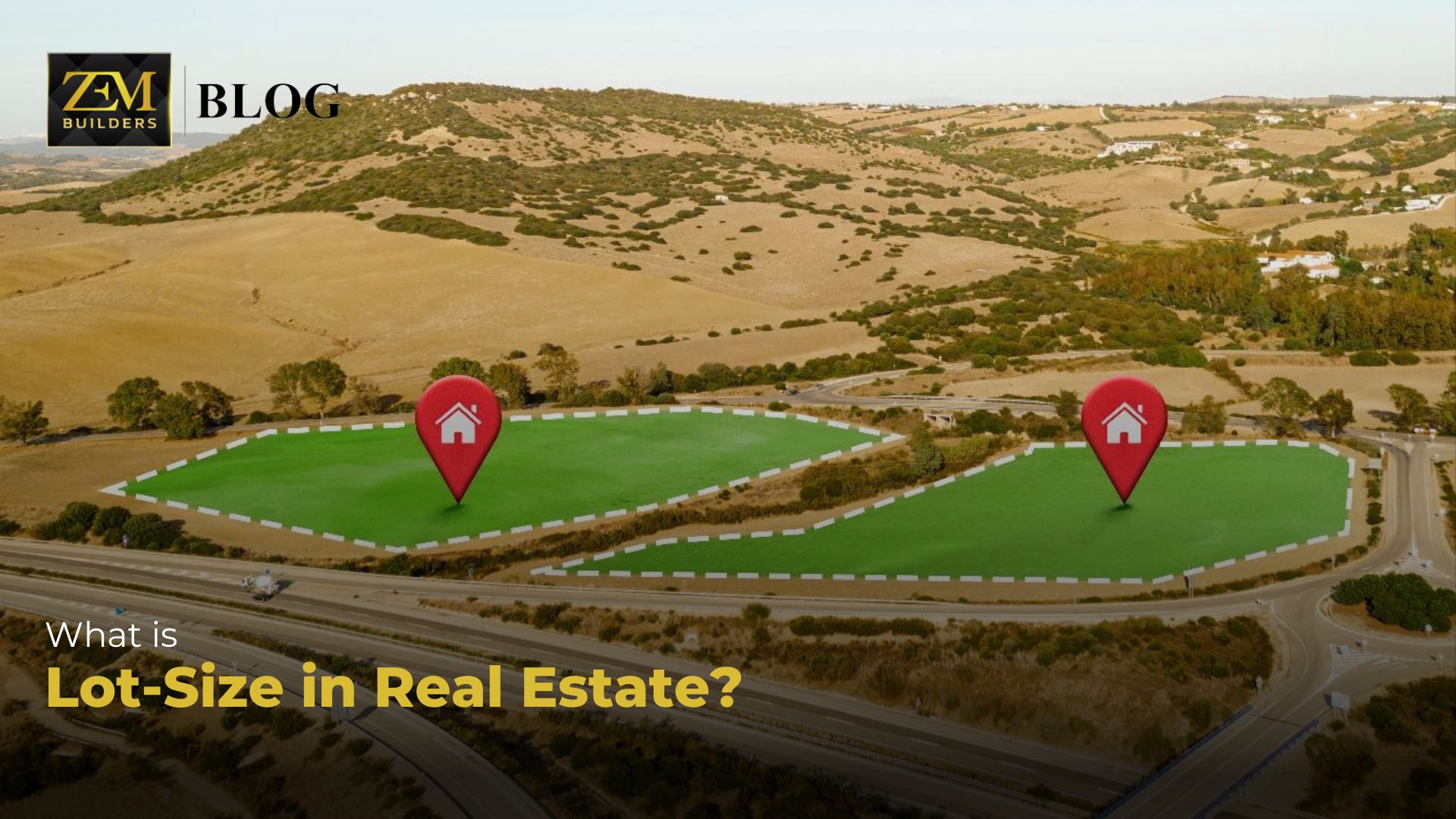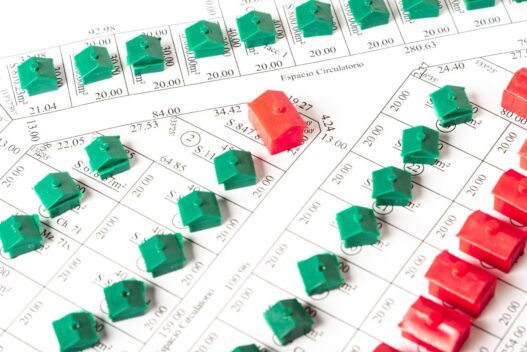What is Lot-Size in Real Estate?

Lot size refers to the total square footage or precise area of a plot of land. It is one of the most critical factors that determines the value of a property and the type of structure that can be built on it. Understanding lot size is crucial for builders and developers, buyers, and urban planners when making real estate decisions.
Lot Size and Construction Impact
The permitted dimensions dictate the types of structures feasible based on zoning categories and development rules. Typical lot sizes range from a few hundred square feet yards for independent homes and more generous farmhouse acreages.
Lot size outlines the maximum construction potential and buildable area. Smaller lots accommodate dense housing like high-rises, while bigger sizes enable bungalows within gated communities. Overall area availability directly impacts the feasible number of saleable units for apartment projects.
For builders, lot size calculations determine total developable and saleable space to assess revenue viability. In essence, lot size decides what can be built on a real estate site per localization regulations.

Regulations for Lot Sizes
Most cities outline zoning restrictions specifying permitted residential and commercial lot dimensions as part of development rules. For example, allowed lot sizes within Islamabad property developments may be larger than in more compact metro city constructions to enable spacious housing.
Related imperatives like floor area ratios and setbacks stem from the allotted land area. Builders have to abide by these localized policies while designing real estate projects. Each region mandates minimum lot size thresholds essential for development approvals.
Typical Plot Sizes in the Pakistan Real Estate Market
Pakistan has seen rapid urbanization and population growth over the last few decades. It has led to a massive expansion in real estate development, especially in major cities like Karachi, Lahore and Islamabad.
Investments from builders, developers, and overseas Pakistanis have facilitated this real estate boom. However, urban planning challenges still need to be addressed, especially regarding optimal land utilization in the context of lot sizes.
Some of the most common lot size measurements seen in property developments across Pakistan are:
One hundred twenty square yards
It remains the most popular lot size for buying plots in both planned and unplanned societies. Houses with 3-4 bedrooms can be comfortably built on this.
Two hundred square yards
It allows bungalows with 4+ bedrooms to be constructed. Many mid to high-end projects nowadays market 200-square-yard residential plots.
Five hundred square yards
This lot size is seen in farmhouse schemes and allows lavish bungalows. However, only some people can afford this large lot for personal use.

Optimal Lot-Sizes
While defining policies, urban planners aim to figure out optimal lot sizes that make the most efficient use of land and infrastructure while allowing maximum constructability. Optimal lot sizes are intended to achieve the highest and best use of the real estate, avoiding under and building-aligned growth to infrastructure capacity. For home buyers, optimal lot size means a home with all amenities and facilities.
The Impact of Plot Size on Exterior Spaces
Pakistan’s fluctuating regional climates make verdant exterior living spaces desirable for most real estate occupants. More generous land lots allow the creation of lavish gardens, swimming pools and other greenery-filled amenities that smaller plots lack.
Outdoor environment viability contributes substantially to property valuation as demand for external leisure and living spaces surges in the real estate market. Consequently, prospects of external space utilization from available land areas remain a vital priority for many Pakistani home buyers when evaluating plots.

Lot-Size Impact on Valuations
Regarding property rates and valuations, lot size is the most crucial factor after location. The one built on a more considerable lot will be more valued in two identical properties. Larger lot sizes allow for more built-up space and spacious structures. Bigger outdoor spaces also appeal to most home buyers. In commercial real estate, larger floor plates because of bigger lot sizes command higher rents and valuations.
Lot Size Impact on Stakeholders
To determine financial feasibility, leading real estate developers undertake lot size analysis during initial project planning. Lot dimensions directly impact property design parameters, including units, bedrooms, bathrooms, and salable areas. They also influence potential revenues and construction costs.
From a buyer’s perspective, lot area availability determines the provisioning of critical facilities like parking. Lot size also impacts the creation of exterior living spaces. For home buyers, lot dimensions remain central to purchase decisions as they dictate amenities and the ability to plan interior spaces. Most buyers are willing to pay a premium for appropriately sized plots.

Conclusion
In summary, lot sizes are the core of real estate dealings and property decisions. With so much depending on it, analyzing permitted lot size is the first step in real estate planning and development. The optimal-to-build ratio is pivotal for smart city planning as well. Thus, size has a far-reaching impact on real estate design, development, costs and market dynamics.

